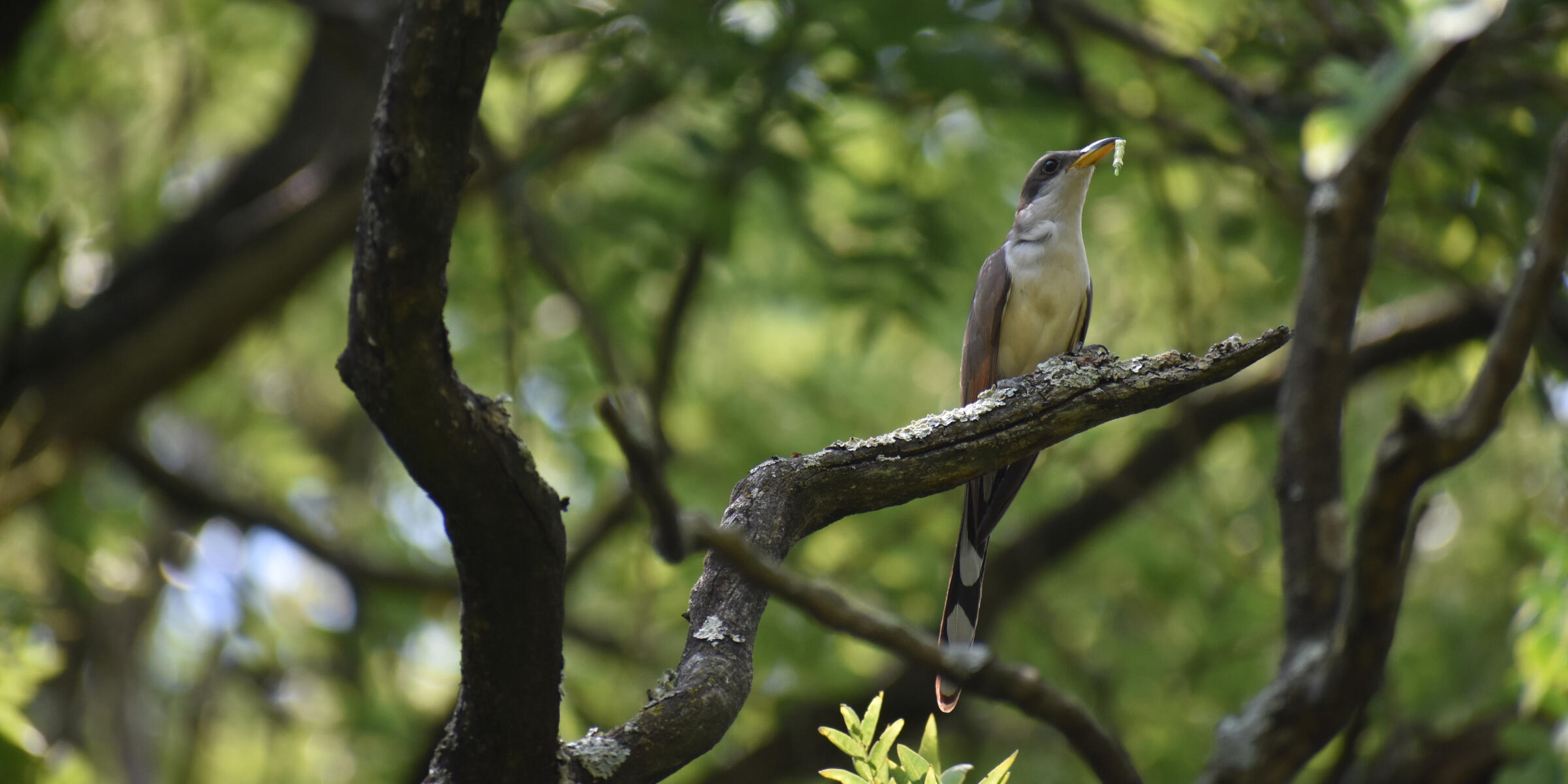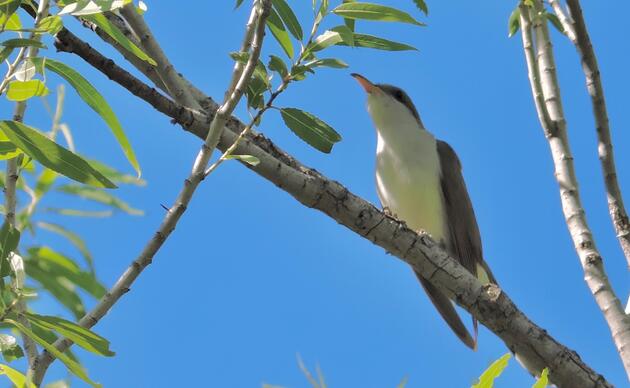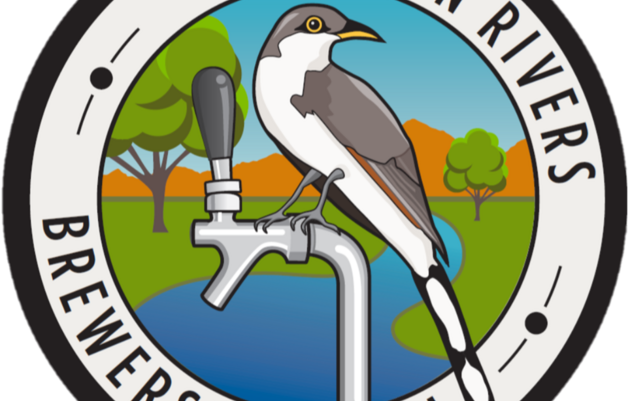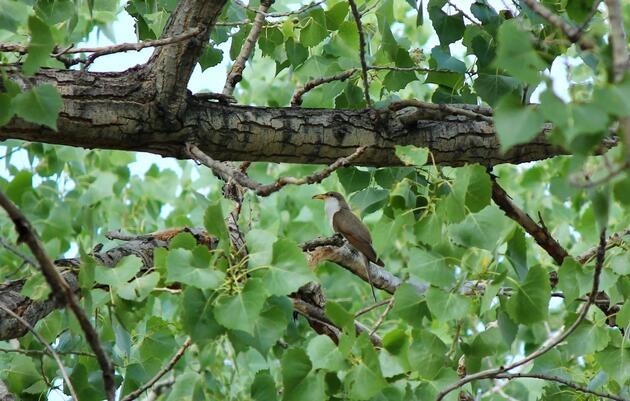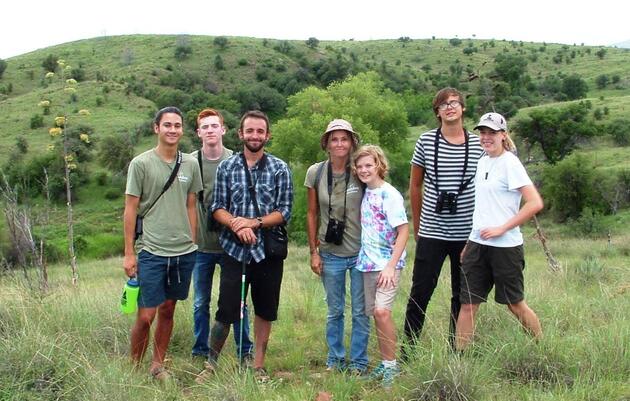A Harbinger of Monsoon Storms
Even before it was listed as Threatened under the Endangered Species Act in 2014, setting your eyes on a Yellow-billed Cuckoo (Coccyzus americanus) wasn't easy. One of two cuckoos in the southwest (the other is the Greater Roadrunner), it spends the majority of its time silently hopping through the dense canopy of broadleaf trees like cottonwood, willow, and oak, foraging for its favored insect prey. Those lucky enough to spot one see a dove-sized, elegant bird, creamy white below and brownish-gray above with a long, black and white-spotted tail, rufous-washed underwings, and a long, curved bill that is black above and yellow-orange below.
While trying to see a cuckoo may be a fool's errand, seeking to hear one is not. During their truncated breeding season in the southwest (late July through September), cuckoos call emphatically to one another with a loud, wooden kuk-kuk-kuk-kuk-kuk-KOWLP-KOWLP-KOWLP that can be heard for hundreds of meters. Their short stay in the region aligns with our summer monsoon storms and the boom of productivity they support. Seemingly to celebrate the coming of this glorious season, they frequently call as storms roll in, a behavior that earned them their colloquial nickname: the Rain Crow.
Sadly, the cuckoo and the habitat on which it depends is struggling. Since colonization, the majority of our riparian, or riverside, forests have been altered, damaged, or otherwise lost. Making things worse, climate change leaves remaining habitat drought stressed and at risk of being lost to catastrophic wildfire. Since 1980, the western population of the species has declined by over fifty percent and its range, which once reached as far north as British Columbia, has contracted dramatically with remaining populations centered in Arizona and New Mexico.
Fortunately, there is hope. Together with our collaborators, our work to put community scientists and activists to work for the Western Yellow-billed Cuckoo has helped to earn the species protected status under the Endangered Species Act, set aside significant acreage of critical habitat, inform local land management practices, protect its habitat from unsustainable water management, and launch the bird into the public view.
Read on to learn more about our work and how you can get involved.
Our Work
- Community Science: Since 2010, we and our partners at the Tucson, Sonoran and Prescott Audubon Societies have been heading into the field each summer to monitor cuckoos. The data collected has helped to fill in gaps in natural history knowledge, inform best practices for land managers, and keep track of the southwest's cuckoo population. Surveys run from mid-June to late August, bring community scientists to some of Arizona's most intact riverside forests and, being focused on a single, charismatic species, offer a great opportunity for new birders and field-worn surveyors alike. For students looking to embark on careers in conservation, youth survey opportunities offer a great way to build resumes, gain experience, and network with potential employers. Want to sign up or learn more? Reach out to Cathy Wise at cathy.wise@audubon.org to be connected with your local Western Yellow-billed Cuckoo survey team.
- Western Rivers Action Network: It's impossible to talk about the cuckoo without talking about water. Ongoing aridification and unsustainable water management are among the biggest threats to the future of the species, and it's up to us to inform the policies and practices that will ensure a sustainable water future not just for the cuckoo, but for countless other species, communities, and economies as well. Looking to make a difference? Add your voice to ours by joining the Western Rivers Action Network (WRAN) today. WRAN is Audubon's multi-state grassroots effort to protect rivers, and, after joining, you'll be alerted to issues and action opportunities relevant to water resources and water-dependent habitats across the southwest. Together, we'll advocate for solutions that benefit birds and people alike
- Western Rivers Brewers' Council: Craft beer depends on reliable water – and so do our rivers. The Western Rivers Brewers’ Council (WRBC) is a coalition of conservation-minded breweries that support Audubon’s work protecting rivers across the Colorado River and Rio Grande basins through advocacy and outreach. Brewers know that an adequate and reliable water supply is critical to their craft. Audubon's Western Rivers Action Network members know that it is critical to healthy rivers, habitats, birds, and other wildlife. By taking action together, we can help protect rivers and all they support throughout the Southwest. Learn more about the work of the WRBC here.
- Annual Field Training: To survey for Western Yellow-billed Cuckoos, surveyors must be permitted by both the U.S. Fish and Wildlife Service and their state wildlife agency. Attendance at a U.S. Fish and Wildlife Service-approved training is a required credential for permitting, but don't worry - we have you covered! Each summer, Audubon Southwest hosts a training in partnership with the U.S. Fish and Wildlife Service, the Arizona Game and Fish Department, the Bureau of Land Management, Tucson Audubon. and Northern Arizona University. Contact Cathy Wise at cathy.wise@audubon.org for more information.
Related
Western Rivers Brewers' Council
Craft beer depends on reliable water – and so do our rivers. Take action today alongside your favorite craft breweries!
Rethinking Western Yellow-Billed Cuckoo Habitat
Audubon Southwest survey efforts expands our view of cuckoo territory
How you can help, right now
Join the Western Water Action Network
Receive action alerts about water issues, and issues that are affecting birds across the arid West.
Donate
Help secure the future for birds at risk from climate change, habitat loss, and other threats. Your support will power our science, education, advocacy and on-the-ground conservation efforts.
Nina Mason Pulliam Rio Salado Audubon Center
Visit the Nina Mason Pulliam Rio Salado Audubon Center in Phoenix, Arizona.

